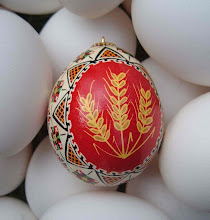Thursday, May 20, 2010
What are these Seedlings Part 2
Here's a picture of a marigold (on the left) and a ragweed. At this stage it's fairly easy to tell them apart, but in a row of marigolds just coming up, not so much. The marigold has a ring of crushed oyster shells around it just so I don't mistakenly weed it as a ragweed.
Here's a picture of a row of zinnias and marigolds, with various weeds.
Here's a picture of 3 little seedlings from the above picture. The top plant is a ragweed, and the middle is a marigold.. Notice that the marigold has longer cotyledons (the first leaves), and the ragweed has rounder cotyledons. The ragweed is darker green and may have a reddish cast to the cotyledons - but that can be true of marigolds too. The bottom weed I don't have a name for - will work on that this year. I think it came in on compost and probably isn't all over the whole garden. It grows about 12 inches tall, and has tiny white flowers. There are quite a few of this weed in the picture showing the row. It's color is distinctly yellow-green.
I'm pretty sure this is a zinnia - but at any rate I'll leave it until I'm sure.
This plant (from the row above) is one of my favorite weeds - lamb's quarters, which I grew up calling pigweed, though in other parts of the country another weed goes by the name of pigweed. This is where latin names are so useful! This lamb's quarters is Chenopodium album, and is a relative of spinach and beets and is very nutritious. It's also in the same genus as Chenopodium gigantium, which Johnny's seeds sells as a food plant. I have a few meals of lamb's quarters every spring, and it's usually my first harvest. On this plant you can see the little pearly dusting on the surface of the leaves. Ragweed has now displaced lamb's quarters as the dominant weed in our garden, which is disappointing.
This is a picture of a larger lamb's quarters with a pea plant, and the color is very much the same. In other words, the lamb's quarters is a blue-green, though it often has a magenta cast to the center whorl of leaves. This is just about the size I like them best, though I'll pick them up to 4 inches tall or so. After that individual leaves need to be picked, but at this size the whole plant can be thrown in a salad or cooked.
Subscribe to:
Post Comments (Atom)









No comments:
Post a Comment